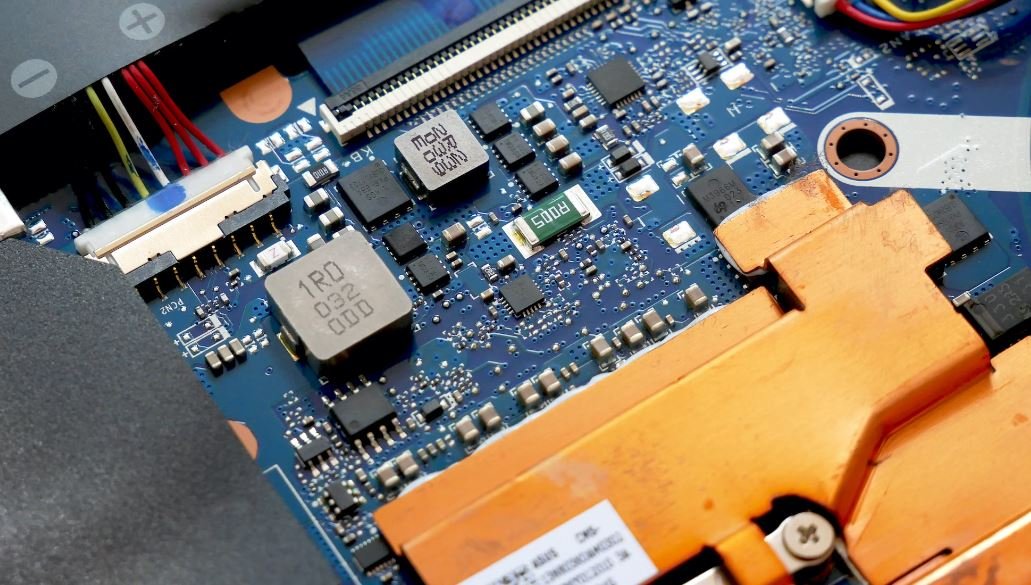Why Application Not Responding
Have you ever experienced the frustration of an application not responding when you’re in the middle of an important task? It can be frustrating and time-consuming to wait for an unresponsive application to start working again. In this article, we will explore the causes of application unresponsiveness and provide some tips on how to deal with this common issue.
Key Takeaways
- Application not responding is a common issue that can occur due to various reasons.
- Common causes of application unresponsiveness include excessive CPU usage, memory leaks, and software conflicts.
- Restarting the application, checking for updates, and optimizing system resources can help resolve the issue.
What Causes Applications to Become Unresponsive?
There can be several reasons why an application becomes unresponsive. One common cause is excessive CPU usage. When an application uses a large amount of CPU resources, it may become slow or stop responding altogether.
Another cause of application unresponsiveness is memory leaks. A memory leak occurs when an application fails to release memory that it no longer needs. Over time, this can lead to a shortage of available memory, causing the application to freeze or crash.
*In some cases, software conflicts can also cause an application to become unresponsive.* It may happen when two or more applications try to access the same system resources simultaneously, leading to a deadlock.
How to Deal with Application Not Responding
When you encounter an unresponsive application, there are several steps you can take to resolve the issue.
1. Restart the Application
One of the simplest solutions is to restart the application. This can help clear any temporary issues or conflicts that may be causing the application to not respond.
2. Check for Updates
Another step you can take is to check for updates. Developers often release updates to fix bugs and improve performance. Updating the application may resolve any compatibility issues or bugs that are causing it to become unresponsive.
3. Optimize System Resources
*To improve the overall performance of your system and prevent application unresponsiveness, you can optimize system resources.* This includes closing unnecessary background applications, freeing up disk space, and ensuring that your computer meets the minimum system requirements for the application.
Examples of Application Not Responding Issues
Let’s take a look at some real-world examples of application not responding issues and how they were resolved.
| Application | Issue | Resolution |
|---|---|---|
| Microsoft Word | Application freezes when opening large documents. | Dividing the document into smaller sections and optimizing system resources. |
| Google Chrome | Browser becomes unresponsive when opening multiple tabs. | Disabling unnecessary extensions and updating the browser to the latest version. |
There are numerous ways to tackle the issues of unresponsive applications, and finding the right solution often depends on the specific circumstances and underlying causes.
Conclusion
In conclusion, application not responding is a common issue that can occur due to excessive CPU usage, memory leaks, or software conflicts. Restarting the application, checking for updates, and optimizing system resources are some effective ways to deal with this problem. By addressing the underlying causes and taking proactive measures, you can minimize the occurrence of application unresponsiveness and improve your overall computing experience.

Common Misconceptions
Paragraph 1
One common misconception about application not responding is that it is solely caused by the application itself. While it may seem like the application is to blame, there are often underlying factors outside of the application’s control that can contribute to it becoming unresponsive.
- Other running processes or programs can cause resource conflicts.
- Insufficient system memory can lead to slow responsiveness.
- Network issues such as poor connectivity can also cause an application to stop responding.
Paragraph 2
Another misconception is that restarting the application will always resolve the issue of it not responding. While it is true that restarting can sometimes help, it is not a guaranteed fix. There can be deeper issues at play that need to be addressed, such as system or hardware malfunctions.
- Memory leaks or software bugs can persist even after restarting the application.
- Hardware failures, such as a failing hard drive, can cause repeated instances of application not responding.
- Outdated or incompatible software dependencies can disrupt application performance.
Paragraph 3
Many people believe that only complex or resource-intensive applications can become unresponsive. However, even simple applications can freeze or stop responding due to various reasons.
- Dependency conflicts between different components of an application can lead to unresponsiveness.
- Operating system issues, such as driver glitches, can affect any application’s responsiveness.
- Insufficient disk space can impact the ability of an application to operate smoothly.
Paragraph 4
There is a misconception that the application developer is solely responsible for fixing and preventing application not responding issues. While developers do play a crucial role in optimizing and maintaining application performance, there are other factors at play that are beyond their control.
- End-user devices with limited resources or outdated hardware can contribute to unresponsiveness.
- External factors like network congestion or latency can impact application responsiveness.
- Operating system updates or changes can introduce compatibility issues and affect an application’s behavior.
Paragraph 5
One common misconception is that closing the unresponsive application is the only solution when facing the “Application Not Responding” message. While it may seem like the best option, there are strategies to try before resorting to closing the application.
- Using the task manager or equivalent tool to end only the unresponsive part of the application.
- Checking system resources and closing unnecessary background processes to free up memory and CPU usage.
- Waiting for a reasonable amount of time (if the application is lagging) to see if it eventually recovers.

Causes of Application Not Responding
Understanding the various causes of application not responding is crucial for troubleshooting and improving performance. The following table highlights some common reasons that can lead to unresponsive applications.
| Causes | Description | Occurrence |
|---|---|---|
| High CPU Usage | A condition where the application consumes excessive CPU resources. | Often |
| Insufficient Memory | When the application does not have enough memory to execute tasks. | Sometimes |
| Compatibility Issues | Incompatibility between application and underlying hardware or software. | Occasionally |
| Network Latency | Poor network connectivity causing delays in data transmission. | Intermittently |
| Software Bugs | Errors or glitches in the application’s code or design. | Varies |
| Resource Contention | Competing applications or processes fighting for shared resources. | Frequently |
Identifying these causes can help users and developers pinpoint the root issues and take appropriate actions to address them.
Impact of Unresponsive Applications
Unresponsive applications not only frustrate users but also have wider impacts on productivity and user experience. The following table outlines the potential consequences of application not responding.
| Effects | Description |
|---|---|
| User Frustration | Loss of patience and negative perception of the application. |
| Decreased Productivity | Wasted time waiting for the application to respond or restarting it. |
| Data Loss | Possible loss or corruption of unsaved data during system freeze. |
| Business Disruption | Inability to complete tasks, resulting in delayed deadlines or financial impacts. |
| Customer Dissatisfaction | Negative impact on user satisfaction and loyalty towards the application or brand. |
| Reputational Damage | Poor application performance can harm the reputation of both developers and organizations. |
Recognizing the significance of these consequences emphasizes the importance of preventing and resolving application unresponsiveness promptly.
Preventive Measures for Unresponsive Applications
Proactively taking steps to avoid application not responding issues can enhance performance and user satisfaction. The table below presents effective preventive measures to employ.
| Preventive Measures | Description |
|---|---|
| Optimize Code | Ensure efficient coding practices, reducing unnecessary processing and memory usage. |
| Memory Management | Implement effective memory management strategies to prevent memory exhaustion. |
| Hardware Upgrades | Upgrade hardware components to meet the application’s resource requirements. |
| Regular Updates | Maintain updated versions of the application and supporting software. |
| Network Optimization | Improve networking infrastructure to reduce latency and packet loss. |
| Thorough Testing | Perform comprehensive testing and quality assurance before releasing applications. |
Implementing these preventive measures offers a proactive approach to minimize the occurrence of application not responding scenarios.
Ways to Resolve Unresponsive Applications
When faced with an unresponsive application, users can attempt various solutions to resolve the issue. The table below presents potential methods to bring the application back to a responsive state.
| Resolution Methods | Description | Success Rate |
|---|---|---|
| Restart Application | Terminate and relaunch the application to reset its state. | High |
| Close Background Processes | Shut down unrelated processes running in the background to free up system resources. | Moderate |
| Update/Reinstall Application | Apply updates or reinstall the application to resolve software-related issues. | Varies |
| Check System Requirements | Ensure the system meets the minimum requirements for running the application. | Occasionally |
| Kill/Restart Process | Manually terminate and restart the underlying process associated with the application. | Intermittently |
| Seek Technical Support | Contact the application’s support team or seek assistance from IT professionals. | Varies |
Applying these resolution methods can help restore application responsiveness and minimize user disruption.
Effects of Delayed Response in Critical Applications
In certain scenarios, unresponsiveness in critical applications can have severe consequences. The table below highlights the potential effects of delayed response in mission-critical systems.
| Effects | Description |
|---|---|
| Financial Loss | Significant monetary impacts resulting from application downtime or error. |
| Data Breach | Increased vulnerability to security breaches during unresponsive periods. |
| Legal Consequences | Potential legal liabilities due to application failures in regulated industries. |
| Operational Disruption | Impacted business operations leading to delayed workflows and reduced efficiency. |
| User Safety Risks | Possible risks to user safety or critical systems if unresponsiveness occurs in critical domains. |
| Reputation Damage | Negative impact on brand reputation, customer trust, and market position. |
Understanding these risks emphasizes the need for prompt response and robust measures to secure critical application performance.
Common Performance Metrics for Application Responsiveness
Measuring and monitoring performance metrics is essential for evaluating and improving application responsiveness. The table below presents common metrics used for assessing application performance.
| Performance Metrics | Description |
|---|---|
| Response Time | The average time taken for the application to respond to user input or requests. |
| Throughput | The number of successful transactions or operations the application can handle per unit of time. |
| Error Rate | The percentage of errors or failures encountered during application usage. |
| Resource Utilization | The extent to which system resources (CPU, memory, disk) are utilized by the application. |
| Concurrency | The number of simultaneous users or processes the application can handle efficiently. |
| Availability | The proportion of time that the application is accessible and responsive to users. |
Tracking these performance metrics provides insights into the current state and trends of application responsiveness, enabling targeted optimizations.
Importance of User Experience in Application Responsiveness
User experience plays a vital role in the success and adoption of applications. The following table highlights the importance of user experience in relation to application responsiveness.
| Importance Factors | Description |
|---|---|
| User Satisfaction | Application responsiveness is a key factor in ensuring a positive user experience. |
| User Retention | A seamless and responsive application increases user loyalty and retention. |
| Competitive Advantage | Positive user experiences differentiate applications from competitors in the market. |
| Brand Perception | User perception of a brand can be influenced by application responsiveness. |
| User Engagement | Engaged users are more likely to utilize the application and its features thoroughly. |
| Business Success | Application responsiveness contributes to overall business growth and success. |
Recognizing the significance of user experience emphasizes the need for prioritizing application responsiveness in development and maintenance efforts.
Conclusion
Application not responding can be caused by various factors, such as high CPU usage, insufficient memory, compatibility issues, network latency, software bugs, and resource contention. It can have negative effects on user satisfaction, productivity, data integrity, business operations, and reputation. Preventive measures, resolution methods, and proper monitoring of performance metrics play key roles in addressing and mitigating unresponsive applications. Additionally, prioritizing user experience and considering the consequences of delayed response in critical applications are essential for overall success. By understanding the causes, impacts, and appropriate measures, users and developers can improve application responsiveness and enhance user satisfaction.
Frequently Asked Questions
Why Application Not Responding





